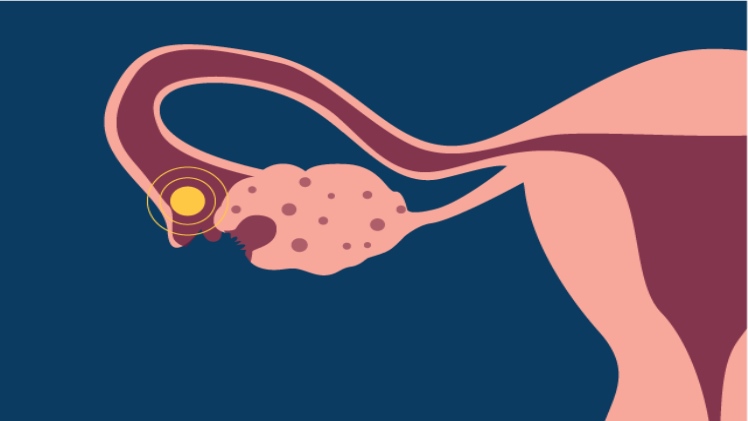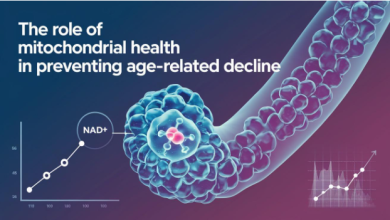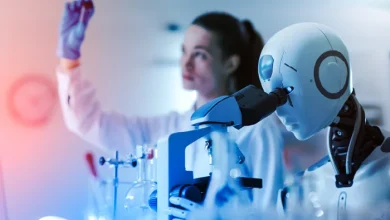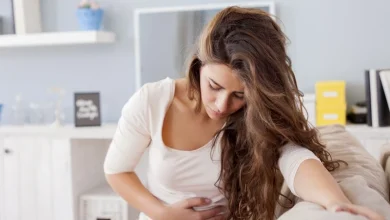
Ovulation Process: What Happens In A Woman’s Body When She Ovulates?
Every month, a healthy woman’s reproductive systems prepare for pregnancy. In this preparation, there’s a unique relationship between the pituitary gland in the brain, the ovaries, and the uterus to work and establish the ideal situation for the release of an egg, the meeting of sperm and egg, and the implantation of the fertilized egg in the uterus.
What is ovulation?
Ovulation occurs when an egg is released from one of the ovaries. The egg goes down the fallopian tubes, and the womb prepares for embryo implantation (fertilized egg).
As you may know already, a woman can become pregnant only after the egg is fertilized by a sperm. Sometimes, more than one egg is released during the ovulation process.
It is the release of two or more eggs that results in multiple births. This kind of multiple births is known as fraternal twins. We won’t be discussing multiple births here today.
If no sperm fertilizes the eggs your ovaries release, this egg, along with the uterine lining that was produced, would have to leave the body. It is this exit that we see as menstruation.
After an egg is released, it takes 10 to 16 days for menstruation to begin. If that’s the case, then when exactly do you ovulate?
When does ovulation happen?
As we’ve seen, ovulation takes place a week or two before menstruation. There are various ways to see when ovulation occurs:
The menstrual cycle.
You can calculate your ovulation from your menstrual cycle itself. Ovulation usually occurs on day 14 of a 28-day menstrual cycle, beginning with the first day of your period. Regardless of the overall cycle duration, most people will have 14 to 16 days following ovulation.
However, average adult cycles might last as little as 21 days or as long as 35 days.
To determine the length of your cycle, you should follow it over several months. You will most likely ovulate around the middle of your cycle, give or take a few days.
Your temperature.
Ovulation would cause a small change in your body temperature. For a few days following ovulation, your temperature rises by around 0.5 to 1.3°F (0.3 to 0.7°C). Taking your temperature every morning may allow you to spot the change as soon as it comes
Cervical discharge
During ovulation, you’ll notice a clearer gel-like fluid discharge from your vagina.
Is it common to have pain during ovulation?
Many people suffer from ovulation pain. The pain is usually felt in the lower abdomen and pelvis, in the center, or on one side. Ovulation pain can occur when an egg explodes from a follicle. The follicle is simply the sacs in your ovaries that contain eggs.
Pain during ovulation may also be caused by a medical problem. Hence, it is advisable to consult your doctor to ensure the pain isn’t caused by something more serious.
Symptoms of ovulation
Everyone is unique, so not everyone exhibits ovulation symptoms. The most typical symptoms in those who do are as follows:
- Breasts become tender.
- Bloating.
- Minor pelvic or abdominal discomfort.
- Spotting or light bleeding
- Changes in your cervix’s location and stiffness.
- Sexual desire is increased.
- Increased senses of smell, taste, and sight.
- mood swings.
- Appetite swings.
You may not experience all these symptoms at the same time. However, when you see two or more of them, it’s possible that you’re ovulating. If you’re not so sure, simply get an ovulation test kit to confirm.
What are the processes women go through during ovulation
There are four different phases women go through during ovulation;
Menstrual Phase
This is the first phase of the ovulation process, and it’s the point in the cycle when a woman gets her period, commonly known as menstruation. Menstruation usually lasts 4 to 7 days.
When a woman goes through her period, her body releases the nutrient-rich lining formed in her uterus during the previous cycle. This happens when estrogen and progesterone levels fall and there is no pregnancy.
The Follicular Stage (also known as the Pre-ovulatory Phase)
This is the first part of the menstrual cycle, starting on the first day of your period and lasting 10 to 17 days. The ovaries hold all of the immature eggs that will be needed during the entire process.
The brain will send a hormonal signal to the follicle-stimulating hormone (FSH) to the ovaries to encourage numerous follicles to mature each month. Consider it a race among the follicles to see which one will produce a mature egg to be released at the moment of ovulation.
A single egg is found in each follicle collected throughout a cycle. At the moment of ovulation, the quickest, healthiest follicle and egg, also known as the dominant follicle, will win the race and release an egg.
The body subsequently absorbed the other follicles and eggs in the race, having missed out on the possibility of fully developing or being released.
Changes take place within the uterine lining as follicles in the ovary develop. As the estrogen level increases, it causes the uterine lining, known as the endometrium, to thicken.
Ovulatory Period
Everything that occurs during the Follicular phase prepares the body for a set of hormonal events leading to ovulation.
Ovulation occurs mid-cycle in response to a series of hormonal changes caused by an estrogen peak, which can occur on any day between days 10 and 17 of the Follicular phase. This estrogen peak causes a sudden rise in Luteinizing Hormone (LH), which causes ovulation within 24 hours, sometimes up to 48 hours.
Ovulation is the event by which an egg is released from the dominant follicle within an ovary and into the fallopian tube, where it can be fertilized by sperm. A woman may only become pregnant throughout her menstrual cycle at this time.
When an egg is released, it is fertile for up to one day, but sperm can be healthy for up to three days. This indicates that the days preceding ovulation are the most fertile of your cycle.
Keep in mind that pregnancy is most likely to occur when sperm is accessible a few days before or shortly after ovulation.
Luteal Phase
This stage of the Ovulation Cycle lasts around 14 days. The major hormone of the Follicular Period, estrogen, drops while progesterone levels rise during this phase.
Estrogen’s role is to fertilize and encourage the growth of the uterine lining, and progesterone has to maintain that lining so that a fertilized egg may implant or attach itself to the uterus. Progesterone levels rise around a week following the Luteinizing Hormone (LH) surge, which aligns with the period of embryo implantation if the egg has been fertilized.
The increased progesterone levels are caused by the corpus luteum, which is the leftover follicle in the ovary that produced an egg during ovulation.
Human Chorionic Gonadotropin (HCG) is released by the embryo and is evident in urine and blood tests about 2 weeks after implantation, or 4 to 5 weeks after the first day of your last menstruation.
Increased progesterone levels also tell the ovaries not to release any more eggs at this time. If a fertilized egg does not bond to the uterine lining during the Luteal Phase, the progesterone level will drop and the corpus luteum would be reabsorbed a few days before your menstruation begins.
At the same moment, the brain restarts hormonal signals to prepare the next set of follicles to drive to ovulation. An Ovulatory Cycle, often known as your Menstrual Cycle starts.
Menstrual periods can range in length from 24 to 35 days, with a 28-30 day cycle being the most common.
Conclusion
If you’re thinking about getting pregnant any time soon, consider having a reproductive visit with a doctor.
They can answer any concerns you have regarding ovulation and monitoring, as well as provide you with advice on how to time intercourse to improve your chances. They can also rule out any illnesses that may be causing delayed ovulation, ovulation pain, or other strange symptoms.
If you are not planning to get pregnant, a doctor can assist you in selecting the best type of contraception for you.



